Archive for the ‘Blog’ Category
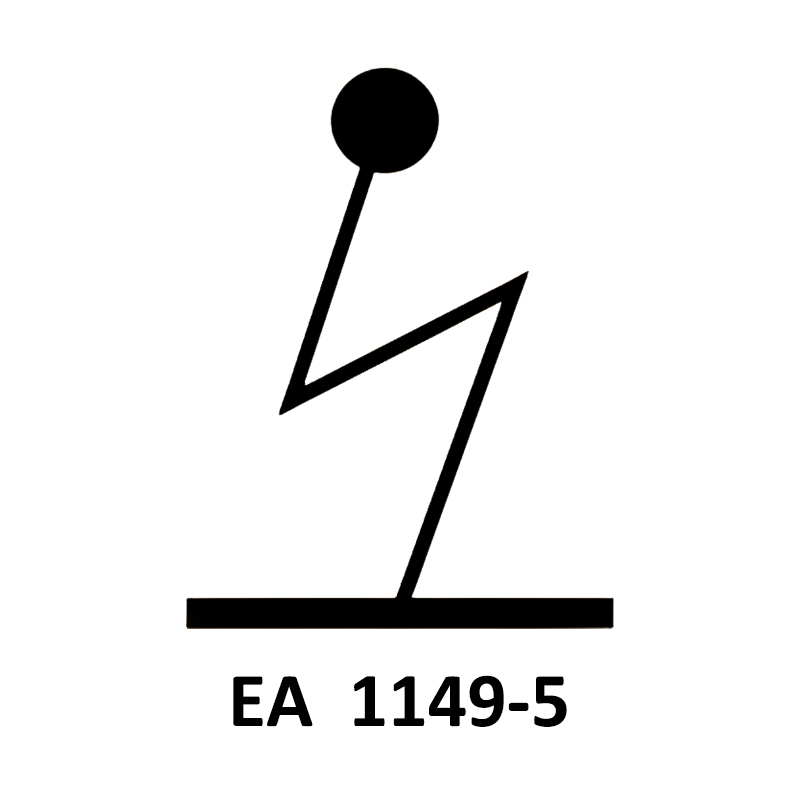
EN 1149-5 is a European standard that pertains to protective clothing designed to provide protection against electrostatic discharge in potentially explosive atmospheres. The title of the standard is “Protective clothing – Electrostatic properties – Part 5: Material performance and design requirements.” It falls under the category of personal protective equipment (PPE) and is intended to ensure that protective clothing worn by workers in environments with flammable or explosive hazards offers effective protection against the buildup and discharge of static electricity.
EN 1149-5 specifies the requirements and testing methods for clothing materials and design that are intended to prevent the accumulation of static electricity on the surface of the clothing. This helps to minimize the risk of sparking and ignition in potentially explosive atmospheres.
The main parameters covered by EN 1149-5 include:
- Surface Resistance: The clothing’s surface resistance is tested to ensure it allows the controlled dissipation of static charges, preventing them from accumulating and causing sparks.
- Charge Decay: The clothing’s ability to dissipate static charges over time is evaluated.
- Design Requirements: The standard outlines design considerations to ensure that protective clothing maintains its electrostatic properties after wear, washing, and other conditions.
Clothing that conforms to EN 1149-5 is often labeled as such, indicating that it meets the standard’s requirements for protecting against electrostatic discharge in potentially explosive atmospheres.
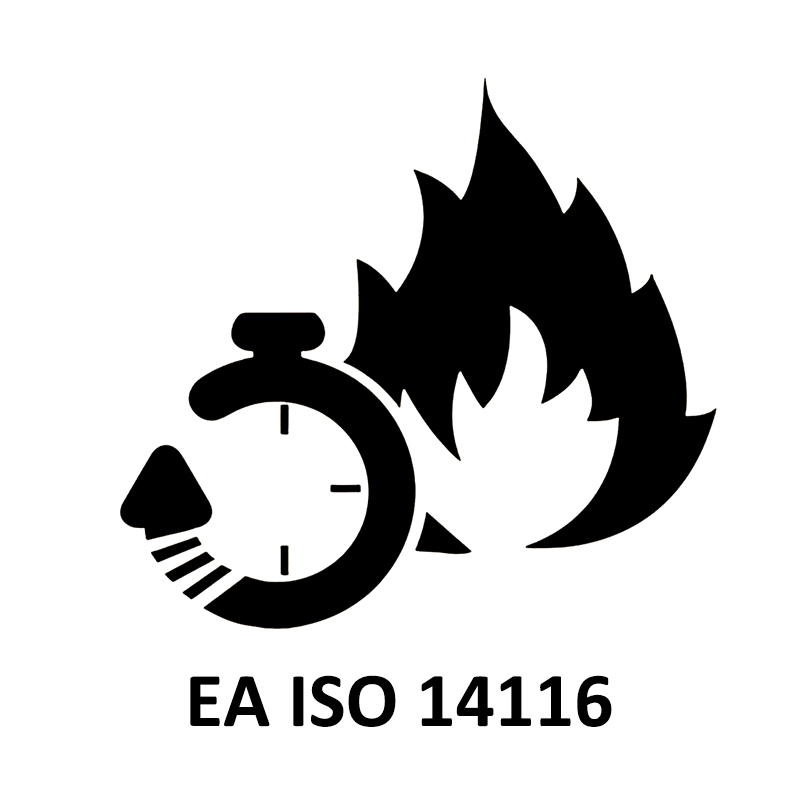
EN ISO 14116 is a European standard that relates to protective clothing designed to provide protection against flame and limited flame spread. The title of the standard is “Protective clothing – Protection against flame – Limited flame spread materials, material assemblies, and clothing.” It falls under the category of personal protective equipment (PPE) and is intended to ensure that protective clothing worn by workers in flame-exposed environments offers effective protection against flame and heat.
EN ISO 14116 specifies the requirements and testing methods for clothing, materials, and material assemblies that are intended to protect against limited flame spread. The standard aims to prevent the rapid spread of flames across the surface of the clothing, reducing the risk of injuries due to burns and other thermal hazards.
The main parameter covered by EN ISO 14116 is:
- Limited Flame Spread: The clothing’s ability to limit the spread of flames across its surface is tested to ensure protection against ignition and rapid flame propagation.
EN ISO 14116 categorizes protective clothing into three indexes:
- Index 1: Clothing in this category offers limited flame spread properties but does not provide protection against contact heat or convective heat.
- Index 2: Clothing in this category provides limited flame spread protection as well as protection against convective heat.
- Index 3: Clothing in this category provides limited flame spread protection as well as protection against radiant heat.
Garments conforming to EN ISO 14116 are often labeled with the relevant index information to indicate the level of protection they provide against flame spread.
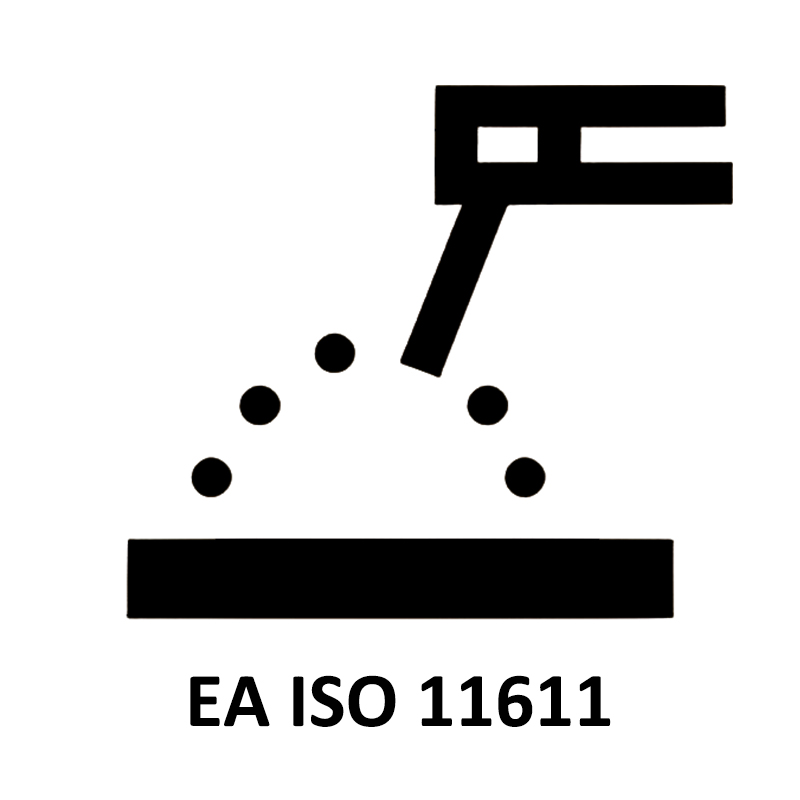
EN ISO 11611 is a European standard that pertains to protective clothing designed for use in welding and allied processes. The title of the standard is “Protective clothing for use in welding and allied processes.” It falls under the category of personal protective equipment (PPE) and is intended to ensure that protective clothing worn by welders and workers in similar processes offers effective protection against heat, flame, and spatter.
EN ISO 11611 specifies the requirements and testing methods for protective clothing that is intended to be used by individuals who are involved in welding, cutting, and similar processes that generate heat, sparks, and molten metal splashes. The standard aims to minimize the risk of burns and other injuries associated with these processes.
The main parameters covered by EN ISO 11611 include:
- Flame Spread Resistance: The clothing’s ability to resist the spread of flames across its surface is tested to ensure protection against the ignition of nearby flammable materials.
- Material Performance: The standard addresses factors such as tensile strength, tear resistance, and seam strength to ensure the clothing’s overall durability.
- Welding Performance: The clothing’s resistance to heat, flame, and welding spatter is evaluated to ensure it can withstand the conditions encountered during welding and similar processes.
- Design and Construction: EN ISO 11611 outlines requirements for the design and construction of the clothing, including features like closures, fit, and accessibility.
EN ISO 11611 categorizes protective clothing into two classes:
- Class 1: Clothing in this class is designed for less hazardous welding and similar processes. It provides protection against less severe exposure to spatter and radiant heat.
- Class 2: Clothing in this class is intended for more hazardous welding and allied processes. It offers higher levels of protection against more severe exposure to spatter and radiant heat.
Garments conforming to EN ISO 11611 are often labeled with the relevant class information to indicate the level of protection they provide.
It’s important to consult the latest version of EN ISO 11611 or any relevant updates to ensure accurate and up-to-date information, as standards can change over time.
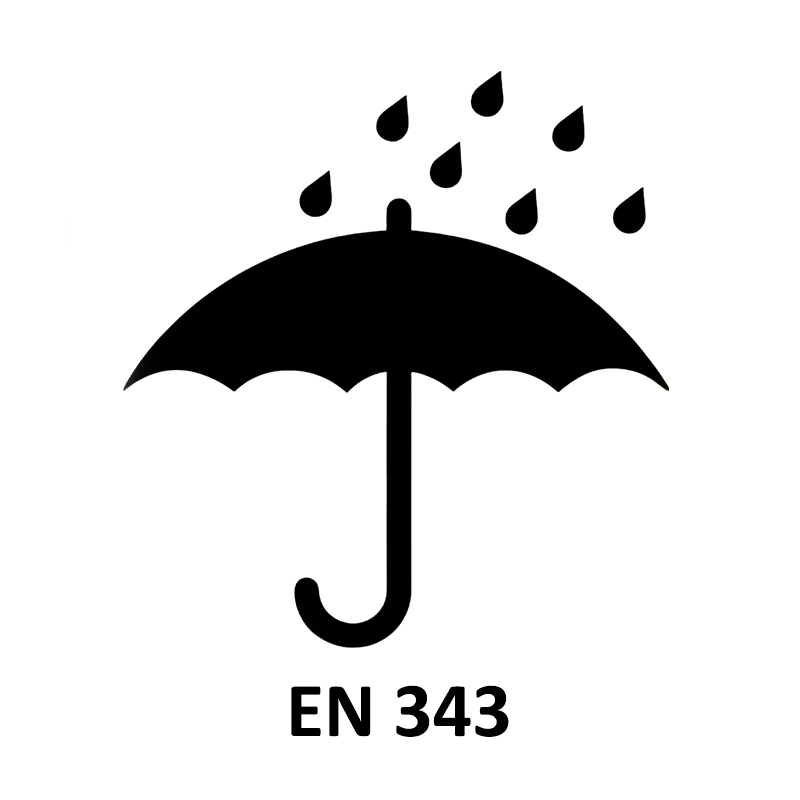
EN 343 is a European standard that pertains to protective clothing designed to provide protection against rain and other wet weather conditions. The title of the standard is “Protective clothing – Protection against rain.” It falls under the category of personal protective equipment (PPE) and is intended to ensure that protective clothing worn in wet environments offers effective waterproofing and protection to the wearer.
EN 343 specifies the requirements and testing methods for clothing that is designed to protect against rain, snow, and other wet conditions. The standard aims to ensure that workers exposed to wet weather are adequately protected from moisture, which can lead to discomfort, reduced body temperature, and other health issues.
The main parameters covered by EN 343 include:
- Water Penetration Resistance: The clothing’s ability to resist water penetration is tested to ensure it offers effective waterproofing. This involves assessing both the material’s resistance to water penetration and the garment’s construction (seams, zippers, etc.).
- Water Vapor Resistance: This parameter evaluates the clothing’s ability to allow water vapor (perspiration) to escape, preventing the accumulation of moisture inside the garment.
- Optional Requirements: The standard also provides optional requirements for additional features such as breathability, moisture management, and resistance to cold environments.
EN 343 categorizes protective clothing into different performance levels based on its ability to provide protection against rain and wet conditions. The clothing is assigned a two-digit code that indicates its water penetration resistance and water vapor resistance properties.
For example, the code “3-1” could represent a garment that offers the highest level of water penetration resistance (Class 3) and moderate water vapor resistance (Class 1).
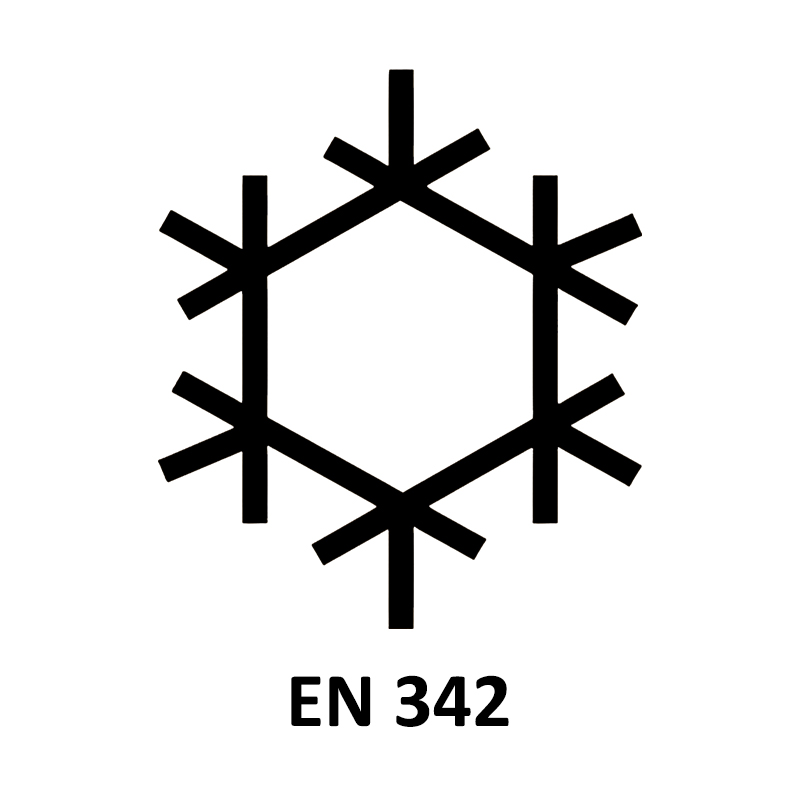
EN 342 is a European standard that pertains to protective clothing designed to provide protection against cold environments. The title of the standard is “Protective clothing – Ensembles and garments for protection against cold.” It falls under the category of personal protective equipment (PPE) and is intended to ensure that protective clothing worn in cold conditions offers effective insulation and protection to the wearer.
EN 342 specifies the requirements and testing methods for clothing ensembles and garments that are designed to protect against cold weather and low temperatures. The standard aims to ensure that workers in cold environments are adequately protected from the hazards of cold stress, which can lead to discomfort, frostbite, and other cold-related injuries.
The main parameters covered by EN 342 include:
- Thermal Insulation: The clothing’s ability to provide thermal insulation is tested to ensure that it offers adequate protection against heat loss in cold conditions.
- Air Permeability: This parameter evaluates the clothing’s resistance to wind penetration, which is important to prevent wind chill and maintain warmth.
- Water Vapor Resistance: The standard assesses the clothing’s ability to allow water vapor (perspiration) to escape while preventing external moisture from entering. This is important to maintain comfort and prevent dampness.
- Optional Requirements: The standard also provides optional requirements for additional features such as reflective materials for visibility and protection against rain.
EN 342 categorizes protective clothing into different performance levels based on its ability to provide thermal protection against cold conditions. The clothing is assigned a two-digit code that indicates its thermal insulation and air permeability properties.
For example, the code “X2X” could represent a garment that offers intermediate thermal insulation, no requirements for air permeability (as indicated by “X”), and no optional rain protection.
As with any standard, it’s important to consult the latest version of EN 342 or any relevant updates to ensure accurate and up-to-date information, as standards can change over time.
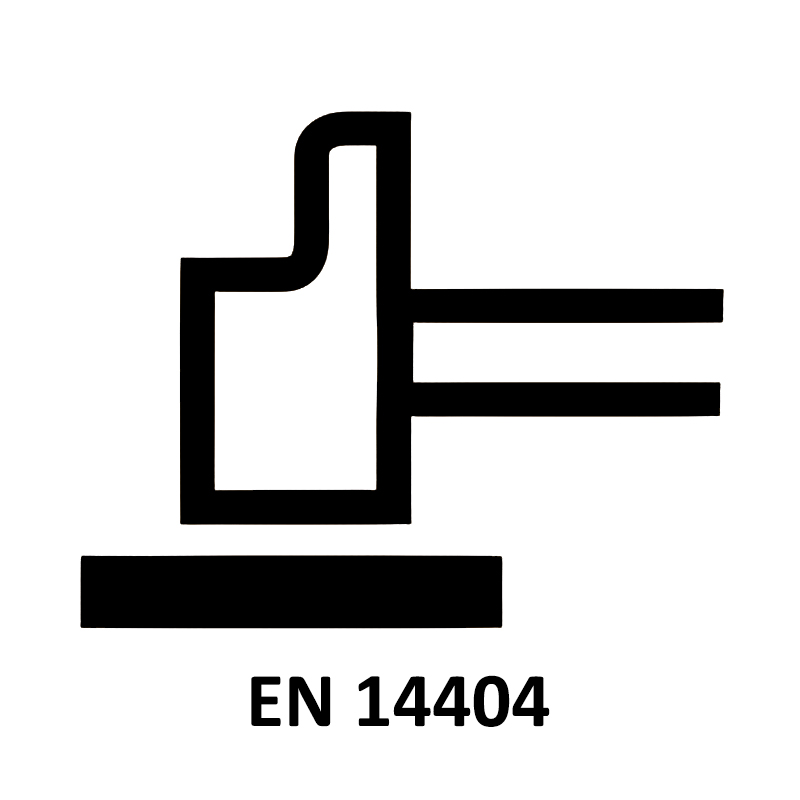
EN 14404 is a European standard that relates to knee protection for work situations that involve kneeling. The title of the standard is “Personal protective equipment – Knee protectors for work in the kneeling position – Requirements and test methods.” This standard is part of the broader category of personal protective equipment (PPE) and is specifically focused on knee protection to reduce the risk of knee injuries for workers who frequently kneel during their tasks.
EN 14404 specifies the requirements and testing methods for knee protectors used by workers who are required to kneel as a part of their job. It aims to ensure that knee protectors effectively provide comfort and protection against impacts and pressure that can lead to knee injuries, such as bruises and strains.
The standard outlines various aspects related to knee protectors, including:
- Design Requirements: The standard specifies design considerations to ensure the knee protectors fit properly, stay in place during use, and do not hinder the worker’s movement.
- Impact Absorption: EN 14404 sets requirements for the knee protector’s ability to absorb and distribute the force of impacts, reducing the risk of injury.
- Penetration Resistance: The knee protector should offer resistance against sharp objects or edges that could potentially penetrate the material and injure the wearer’s knee.
- Ergonomic Performance: The standard addresses the ergonomic aspects of knee protectors, including comfort, ease of use, and potential interference with the worker’s movements.
- Testing Methods: EN 14404 provides detailed testing procedures to evaluate the knee protector’s performance in terms of impact absorption, penetration resistance, and other relevant factors.
Knee protectors that meet the requirements of EN 14404 are often labeled as conforming to this standard. This label indicates that the knee protectors have undergone testing to ensure they meet the established criteria for protection and comfort during kneeling work.
As with any standard, it’s important to consult the latest version of EN 14404 or any relevant updates to ensure accurate and up-to-date information, as standards can change over time.
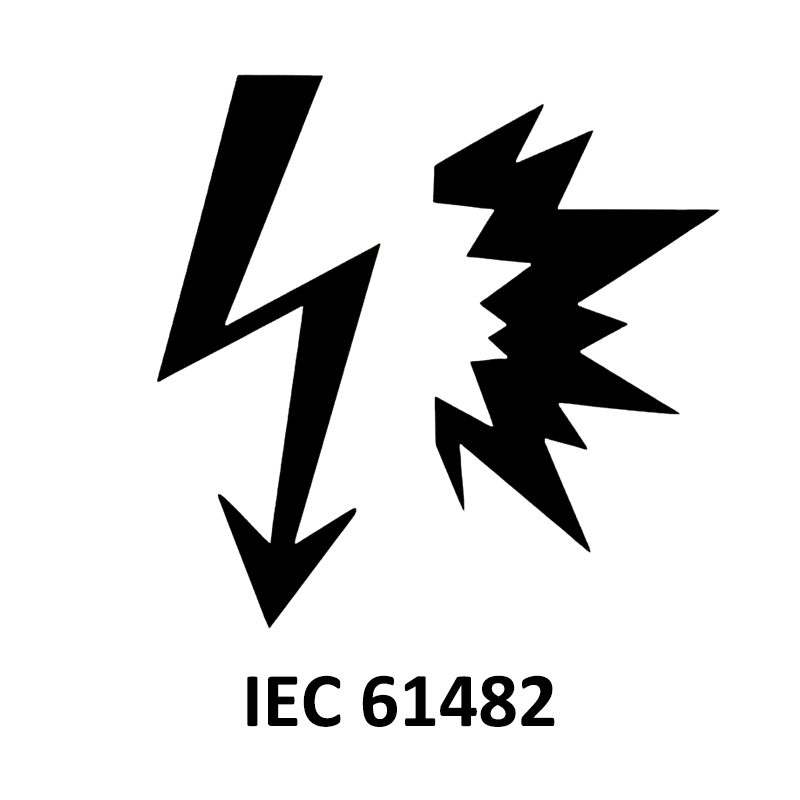
IEC 61482 is an international standard that pertains to protective clothing designed to provide protection against the thermal hazards of an electric arc. The title of the standard is “Live working – Protective clothing against the thermal hazards of an electric arc.” It falls under the domain of electrical safety and personal protective equipment (PPE).
Electric arcs can generate intense heat and energy, which can pose significant hazards to workers in industries where electrical systems are present, such as power generation, distribution, and maintenance. IEC 61482 aims to ensure that protective clothing worn by workers in these industries provides effective protection against the thermal hazards associated with electric arcs.
The standard outlines two different methods for testing and classifying protective clothing:
- Box Test Method (IEC 61482-1-1): This method involves exposing a fabric sample to an electric arc in a controlled environment. The fabric is tested to determine its arc rating, which indicates the level of thermal protection it provides against the energy generated by an electric arc. The arc rating helps in categorizing the fabric’s ability to protect the wearer.
- Open Arc Test Method (IEC 61482-1-2): This method simulates a real-world scenario where the clothing is worn by a mannequin that is exposed to an electric arc. The arc exposure generates heat and energy similar to an actual electrical fault. This method assesses the garment’s performance in a more realistic setting.
The results of these tests lead to the classification of protective clothing into different categories, which provide information about the level of protection they offer against electric arcs. These categories include:
- Class 1: Clothing providing protection against electric arc exposure with an arc rating of at least 4 kA (kiloamperes).
- Class 2: Clothing providing protection against electric arc exposure with an arc rating of at least 7 kA.
- Class 3: Clothing providing protection against electric arc exposure with an arc rating of at least 25 kA.
Manufacturers use these classifications to indicate the level of protection offered by their garments against electric arc hazards.
It’s important to note that standards can be updated or revised, so it’s recommended to consult the latest version of IEC 61482 or any relevant updates to ensure accurate and up-to-date information.
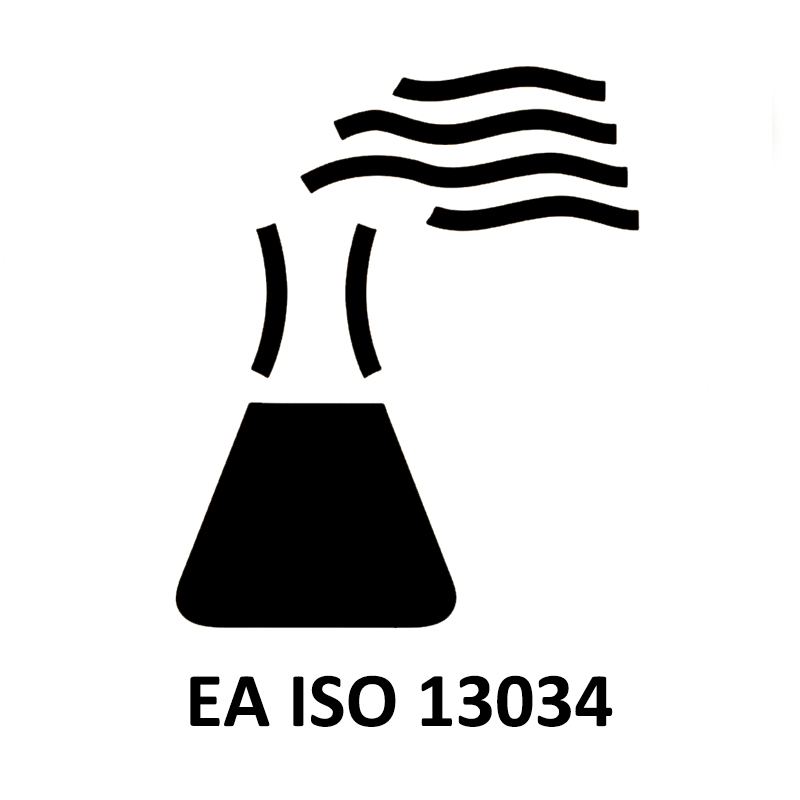
EN ISO 13034 is a European standard that addresses protective clothing against liquid chemicals. The title of the standard is “Protective clothing against liquid chemicals – Performance requirements for chemical protective clothing offering limited protective performance against liquid chemicals (Type 6 and Type PB [6] equipment).” This standard is part of the broader category of personal protective equipment (PPE) and is intended to provide guidelines for clothing that offers protection against liquid chemicals.
EN ISO 13034 specifically covers clothing designed to provide limited protection against liquid chemicals in situations where a higher level of protection is not required. This standard is particularly relevant for applications where there is a risk of exposure to splashes and sprays of liquid chemicals that are not highly hazardous or pressurized.
The standard outlines performance requirements and testing methods for two types of protective clothing:
- Type 6: Limited splash protection – This type of clothing is designed to offer protection against small-scale splashes and sprays of liquid chemicals. It does not provide full protection against higher levels of chemical exposure.
- Type PB [6]: Limited splash protection with spray-tight seams – This type of clothing includes the features of Type 6 clothing but with the added requirement that the seams of the clothing are spray-tight. This offers an enhanced level of protection against liquid penetration at the seams.
EN ISO 13034 covers various aspects of performance, including resistance to penetration by liquid chemicals, seam strength, tear resistance, and more. The standard ensures that the clothing meets minimum requirements for protection against liquid chemicals while considering factors such as comfort, flexibility, and durability.
As with any standard, it’s important to consult the latest version of EN ISO 13034 or any relevant updates to ensure you have accurate and up-to-date information, as standards can change over time.
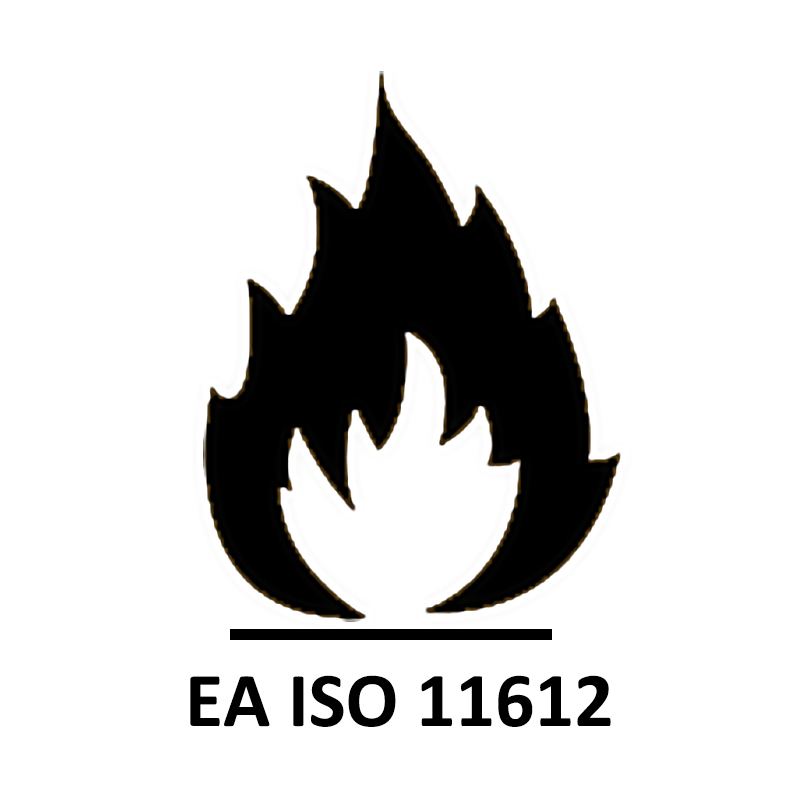
EN ISO 11612 is a European standard that pertains to protective clothing designed to protect the wearer from heat and flames. The standard is titled “Protective clothing – Clothing to protect against heat and flame” and falls under the category of personal protective equipment (PPE). EN ISO 11612 specifies the requirements and testing methods for clothing that is intended to provide protection against various levels of heat and flame exposure.
The standard covers clothing that is used in a variety of industrial settings where workers might be exposed to potential hazards such as flames, radiant heat, convective heat, molten metal splashes, and contact heat. The main purpose of this standard is to ensure that the protective clothing effectively minimizes the risk of burns and injuries that can result from exposure to heat and flames.
EN ISO 11612 categorizes protective clothing into different performance levels based on its ability to resist heat and flame exposure. The standard specifies the requirements for each level, covering aspects like flame spread, convective and radiant heat resistance, and resistance to molten metal splashes.
The main parameters covered by EN ISO 11612 include:
- A: Limited Flame Spread – This parameter measures the clothing’s ability to resist the spread of flames across its surface.
- B: Convective Heat Resistance – This parameter indicates the clothing’s ability to protect against heat transmitted through convection, such as exposure to hot air.
- C: Radiant Heat Resistance – This parameter measures the clothing’s ability to protect against radiant heat, such as heat radiating from flames.
- D: Molten Aluminum Splash Resistance – This parameter assesses the clothing’s ability to resist molten aluminum splashes.
- E: Molten Iron Splash Resistance – This parameter assesses the clothing’s ability to resist molten iron splashes.
- F: Contact Heat Resistance – This parameter measures the clothing’s ability to protect against contact with heated surfaces.
Manufacturers use these codes to indicate the protective properties of their garments. For example, a garment that is designed to offer protection against flame spread, convective and radiant heat, and molten metal splashes might be labeled with the code A1, B1, C1, E1.
As standards can change and evolve, it’s important to refer to the most recent version of EN ISO 11612 or any updates to ensure accurate and current information.
In the world of business, establishing a reputation as an expert is essential for success. In the highly competitive field of Personal Protective Equipment (PPE) manufacturing and supply, the company that stands out as a leader in expertise and quality gains an undeniable edge. Baymro Safety China Co., Ltd., a prominent player in the industry, continues to reinforce its position as the top PPE manufacturing and supply expert from China, emphasizing a commitment to continuous learning and improvement to better serve its customers.
A Quest for Excellence: Baymro Safety China Co., Ltd.
Baymro Safety China Co., Ltd. has long been associated with excellence in PPE manufacturing and supply. With an unwavering dedication to providing top-tier products that ensure the safety and well-being of workers, the company has garnered recognition for its commitment to quality and innovation. However, being a leader in the industry demands more than just exceptional products; it requires establishing a reputation as a knowledgeable expert.
The 104th Shanghai Labor Insurance Products Exhibition: A Platform for Learning and Communication
In April 2023, the employees of Baymro Safety China Co., Ltd. took a significant step towards solidifying their expertise by participating in the 104th Shanghai Labor Insurance Products Exhibition, held at the Shanghai New International Expo Center. This event provided an invaluable platform for industry professionals to gather, share insights, and explore the latest advancements in PPE manufacturing and supply.
The exhibition served as a hub for learning and communication, where Baymro Safety’s employees engaged with fellow experts, industry leaders, and potential clients. By participating in workshops, seminars, and interactive displays, the team expanded their knowledge base, gained insights into emerging trends, and exchanged ideas with peers. Such interactions not only fostered personal growth but also allowed Baymro Safety to showcase its dedication to expertise and continuous improvement.
Winning Orders: A Testament to Expertise and Excellence
Participation in the 2023 Shanghai Labor Insurance Products Exhibition was not only about learning but also about translating that knowledge into tangible results. The employees of Baymro Safety China Co., Ltd. left the exhibition with a clear mission: to secure more orders for their valued customers. Their commitment to this objective further underscores the company’s dedication to delivering the best possible products and services.
A Future of Continued Excellence
As the dust settles after the 2023 Shanghai Labor Insurance Products Exhibition, Baymro Safety China Co., Ltd. emerges not just as a leading PPE manufacturer and supplier, but also as an authority in the field. By actively engaging in events like these, the company demonstrates its unwavering commitment to staying at the forefront of industry advancements, continuously enhancing its offerings, and serving its customers with unparalleled expertise.
In conclusion, the journey of becoming a recognized expert in any industry is marked by a relentless pursuit of knowledge, a dedication to learning, and a commitment to improvement. Baymro Safety China Co., Ltd.’s participation in the 2023 Shanghai Labor Insurance Products Exhibition exemplifies these qualities. As the company continues to strive for excellence, it cements its reputation as the top PPE manufacturing and supply expert from China, ready to face new challenges and serve its customers with unwavering dedication.
 3M
3M Ansell
Ansell Dellta Plus
Dellta Plus Drager
Drager edelrid
edelrid Honeywell
Honeywell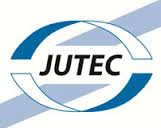 JUTEC
JUTEC lakeland
lakeland MSA
MSA New Pig
New Pig Weldas
Weldas